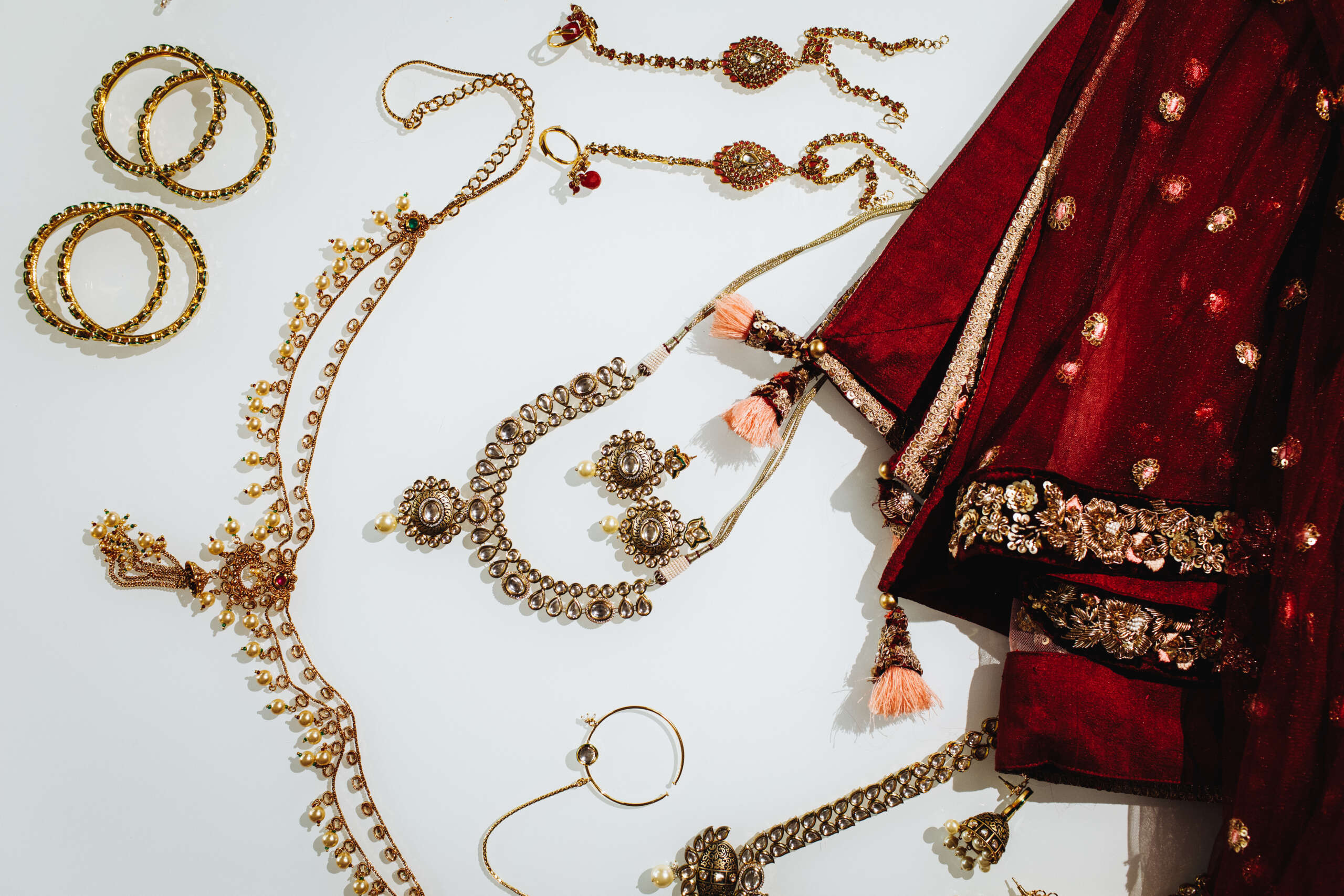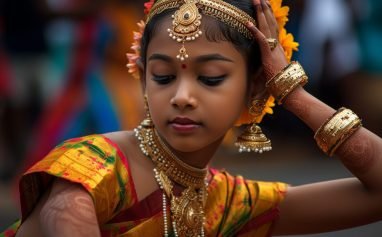Jewelry holds a profound significance in rituals and ceremonies across cultures, symbolizing identity, spirituality, and social status. In India, this significance is deeply ingrained, with jewelry playing a pivotal role in religious observances, life milestones, and community celebrations. This article explores the multifaceted roles of jewelry in Indian rituals and ceremonies, highlighting its cultural richness and symbolic meanings.
Religious Significance of Jewelry
In Indian culture, jewelry serves as more than mere adornment; it is imbued with spiritual and religious significance:
1. Devotional Offerings:
Jewelry is often offered to deities as a gesture of devotion and reverence. Precious ornaments, adorned with gemstones and intricate designs, are placed at temple altars or worn during religious ceremonies to invoke blessings and divine protection.
2. Ritual Adornments:
During religious rituals and festivals such as Diwali, Navaratri, and weddings, individuals wear specific jewelry pieces symbolizing auspiciousness and purity. Gold necklaces, earrings, and bangles are considered sacred and are believed to enhance the spiritual aura of the wearer.
3. Symbolism and Beliefs:
Each piece of jewelry in Hindu traditions carries symbolic meaning. For example, the mangalsutra, a sacred necklace worn by married women, symbolizes marital union and longevity. Toe rings (bichuas) signify marital status, while nose rings (nath) are believed to enhance feminine beauty and spirituality.
Jewelry in Life Milestones
Jewelry accompanies individuals through significant life stages, marking transitions and achievements:
1. Weddings and Engagements:
Indian weddings are elaborate affairs where jewelry plays a central role. The bride adorns herself with ornate gold jewelry, often passed down through generations as family heirlooms. Each piece—necklaces, earrings, maang tikka (forehead ornament)—symbolizes prosperity, blessings, and the bride’s new role.
2. Birth and Naming Ceremonies:
Newborns are adorned with silver anklets (payal) and bracelets (kada), believed to protect them from negative energies and promote health. Naming ceremonies (naamkaran) may involve gifting gold or silver jewelry as a symbol of blessings and prosperity for the child’s future.
3. Festivals and Celebrations:
Throughout the year, festivals like Raksha Bandhan, Durga Puja, and Eid are occasions for wearing traditional jewelry. These ornaments not only enhance festive attire but also reinforce cultural identity and familial bonds, fostering a sense of unity and belonging.
Social and Cultural Significance
Beyond religious and personal milestones, jewelry in India reflects social hierarchies, regional traditions, and artistic expressions:
1. Social Status and Wealth:
Historically, the quantity and quality of jewelry worn by individuals symbolized their social standing and prosperity. Royal families and aristocrats adorned themselves with elaborate gemstone-studded jewelry, showcasing their wealth and power.
2. Artistic Expression:
Indian jewelry is celebrated for its craftsmanship and artistic intricacy. Techniques such as Kundan, Meenakari, and filigree are employed to create stunning pieces that blend traditional motifs with contemporary designs. Artisans draw inspiration from nature, mythology, and cultural heritage to craft jewelry that is both aesthetically pleasing and culturally resonant.
3. Community Identity:
Jewelry styles vary across India’s diverse regions, reflecting local customs and cultural practices. For example, temple jewelry from South India is known for its intricate gold work and gemstone settings, often worn by classical dancers and brides during religious ceremonies.
Contemporary Perspectives and Trends
In modern India, traditional jewelry continues to evolve while retaining its cultural significance:
1. Fashion and Trends:
Contemporary designers reinterpret traditional jewelry styles to cater to changing tastes and fashion trends. Fusion jewelry, blending traditional Indian elements with global influences, appeals to a younger generation seeking unique, statement pieces.
2. Sustainability and Innovation:
There is a growing emphasis on sustainable jewelry practices, including ethical sourcing of materials and eco-friendly production techniques. Artisans are incorporating recycled metals, organic gemstones, and innovative designs to meet global demands for ethical fashion.
3. Global Influence:
Indian jewelry, with its rich history and craftsmanship, enjoys international acclaim and is sought after by collectors and fashion enthusiasts worldwide. Platforms like fashion weeks and artisanal markets showcase the diversity and creativity of Indian jewelry, fostering cultural exchange and appreciation.
Conclusion
Jewelry in Indian rituals and ceremonies is a testament to the country’s cultural richness, artistic heritage, and spiritual depth. From religious offerings to life milestones and festive celebrations, jewelry plays a pivotal role in defining identity, expressing beliefs, and reinforcing social bonds. As India continues to embrace its traditions while embracing modernity, jewelry remains a cherished symbol of heritage and a vibrant expression of cultural continuity.

Brijesh brings a decade of experience in SEO and a deep love for jewelry to his writing. He excels at creating content that shines both on the page and in search engines, ensuring every story about gems and craftsmanship reaches the right audience.








